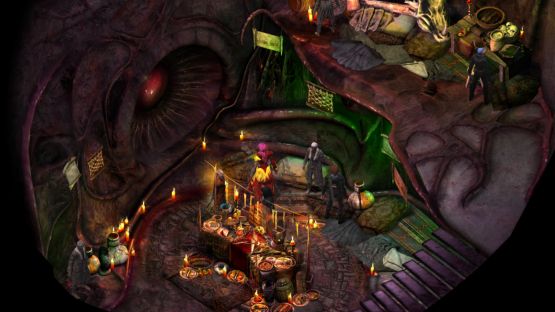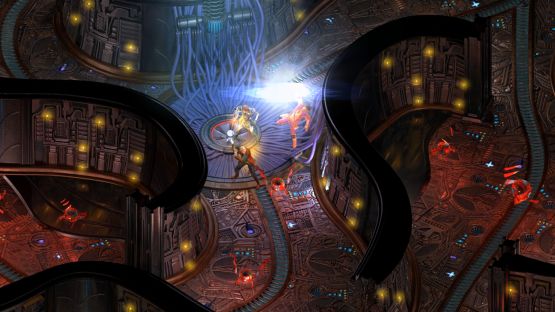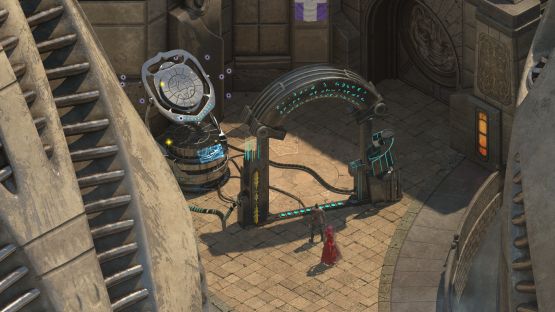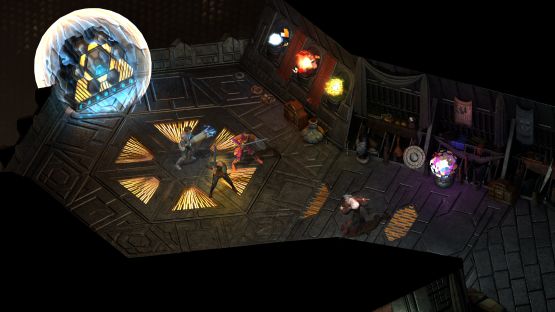The PC Master Race may hate it, but I enjoy it when cRPGs come to console. I never would have played Diablo III without the console port, and I greatly enjoyed my PS4 romp with Divinity: Original Sin when it crossed over. Obsidian has always said that Pillars of Eternity won’t make the leap, but now we have a game that utilizes PoE‘s engine release on console and PC. InXile Entertainment launched a Kickstarter for their spiritual successor to Planescape: Torment called Torment: Tides of Numenera. Thanks to the vast amount of money they raised, they agreed to release the game on PC and console at the same time.
It’s not often this happens simultaneously. Usually, the game is built with either the PC or console platform in mind, and then they port the game to the other with major reconfigurations for the control scheme. The porting process often takes a few months, if not a year to complete. If it’s rushed, it’s often plagued with disaster, such as the PC version of Batman: Arkham Knight or the console version of Book of Unwritten Tales 2. In the case of Torment: Tides of Numenera, I’m afraid this PS4 configuration should have been left in the oven for a bit longer. On the surface, the mechanics are sound and the controls are a great bridge between the vastly different platforms. However, something in the inner workings of the game did not translate over very well, rendering the game a bit of a jerky mess with long load times and moments when it breaks entirely.
Changing Tides
Practically every RPG starts with a nobody who is suddenly thrust into the thick of things and becomes the great hero or heroine. Torment takes this to a whole new level by starting with a character who was just born. They weren’t born in the traditional sense, but born after another being left their host body for yet another body. The cast off body develops a brand new consciousness, new soul, new mind, and has no memories of anything about this body jumper. These people are lovingly called Castoffs, and everyone knows who they are because of a giant tattoo on their heads. The player character is one of these Castoffs, but of course, this Castoff is different. This one has some memories of what the people of the Ninth World call the Changing God. This Castoff is also plagued by something called the Sorrow that is out to destroy the Changing God and everything he creates, including Castoffs.
Both the player and the player character (Last Castoff) have no idea where they are, what they’re doing, or why anything is happening. It’s perfectly normal to feel overwhelmed and want to scream obscenities at the sky. But like the Last Castoff literally dropping out of the sky, this too shall pass. In fact, it’s quite a lovely invitation to openly explore the Ninth World, talk to everyone, pick up all the sidequests, and touch everything in sight.
The biggest rage in RPGs is including choices that matter, and Torment is no different. Every choice you make in the dialogue boxes, whichever sidequests you take on, and how you decide to move forward with a party or without, all completely affect how your game could possibly go. With each choice, the Dominant Tides of the character will change, leading to different reputations. For example, if your Dominant Tide is Blue, then the world will perceive you as someone who simply wants knowledge and will study everything possible. If your Dominant Tide is Silver, then it’s fame and worldwide adoration you seek. The Tides will change incrementally or significantly depending upon your choices. How people view you in the Ninth World will open or close opportunities for other sidequests or perhaps discovering routes to complete the main storyline.
Going Against the Ebb and Flow
The Tides are only one atypical feature of this cRPG. Torment has so many others, it compounds the feeling of being overwhelmed as well as bringing in a fresh new take upon making decisions and combat. For starters, character creation is the strangest I’ve ever come across with an RPG. You don’t pick how your character looks at all beyond gender. Everything else is decided upon whether the class of the Last Castoff (warrior, a mystic, or a jack-of-all-trades) and main attribute. I built one character as a Nano (mystic) with the Charming Attribute. As a result, my starting skills were the ability to scan thoughts of everyone around me and the art of persuasion. The second character I tried out was a Clever Jack, one whose skills heavily relied upon talking her way out of anything instead of combat.
One of the best features of Torment is the ability to talk your way out of nearly every encounter. Since the combat is tactical turn-based, I preferred persuading and deceiving others to think my way instead of engaging in battle. Strategic RPGs are not my forte without some heavy grinding.

There is more to the strategy throughout Torment than in simply the combat. Each time you perform an action, whether it’s to try to remember something, steal something, jerk your hand away quickly, persuade someone, or land an attack Effort must be applied from either Intellect, Might, or Speed. Each character has unique numbers for these three stats, and the amount of Effort you apply from one of those stats will affect the rate of success. If you drain the stats from Effort, which can prevent you from using certain abilities in combat, the only way to recharge them is to rest. You can rest at any time, but time moves on while you sleep, affecting sidequest availability and even the ability to complete them.
There’s a lot of strategic juggling to go around as you navigate the Ninth World, but it settles in over time. This is all before you learn Meres, the ability to jump into other bodies and experience the world through them. Yes, it is overwhelming for you, but it’s just as overwhelming for the Last Castoff too. You’re in this together, no matter what the tide brings in.
Torment: Load Times
Everything about Torment: Tides of Numenera is so lovely. The story and mechanics are incredibly unique, the underlying strategy is challenging, and it’s hard to not have fun while sorting out who your Last Castoff is. As such, it’s extremely unfortunate that the game has so many problems in the back end.
The biggest killer is the load times. Each time you leave an area, the game has to load. The loading can continue for well over a minute, and that’s if it doesn’t lock up entirely. If I had to run back and forth between areas to complete a sidequest, I ground my teeth every time I realized I had another load screen coming up. Once I started to use the time to check my email or Twitter, it was a bit more bearable.
Torment also appears to be constantly loading in the background to the point it drains on the PS4 hardware. My character had very jerky movements from simply walking across the screen. She would move smoothly for three steps, freeze, and then jerk forward a couple more, rinse and repeat. If I was playing on PC, I would swear something was in the background draining my resources, my video card wasn’t up to speed, or I didn’t have enough RAM. But I was on PS4, and I can’t control any of that. Perhaps it runs a bit more smoothly on the PS4 Pro, but that’s merely speculation.
The deal breaker came when my character lost the ability to move. Every now and then, my character would suddenly not be able to take any steps. The game wasn’t frozen, because everyone else around me was moving just fine. To be fair, my character could move, in that as I moved the left analog stick she would start to spin in circles that direction. Loading an earlier auto-save would not fix it. I had to close the game and load my last manual save to move again, but even then, it wasn’t long before she would stop moving again.
For whatever reason, possibly due to the last site I wrote for, I have a Steam copy of Torment: Tides of Numenera. I loaded it up on my PC that is far from top of the line, just to see if the PC version had any of these problems. It did not. The load screens moved in a few seconds, the character never had jerky movements across the screen, and she was always able to step forward. The game is 100% ready on PC, but it needs more time to bake for consoles.

It’s really surprising that a game could be configured so well from PC to console and yet fail in so many other areas under the hood. InXile has the controls, menus, and navigation down pat for console, but it needs more tweaking in its engine before this game can be recommended to anyone. I hate giving this score for Torment, especially knowing that it’s a patch or two away from being a shining cRPG example on the PS4.
Torment: Tides of Numenera review code provided by publisher. For more information on scoring please see our Review Policy here.
-
Unique, incredibly deep story
-
Tactical turn-based combat
-
Effort system
-
Atypical character creation
-
Long load times
-
Jerky character movements as game loads in the background
-
Frequent game breaking moments such as locking up during load times or the player character will not move
A Tormenting Review
-
A Tormenting Review #1

-
A Tormenting Review #2

-
A Tormenting Review #3

-
A Tormenting Review #4

-
A Tormenting Review #5

-
A Tormenting Review #6

-
A Tormenting Review #7

-
A Tormenting Review #8

-
A Tormenting Review #9

-
A Tormenting Review #10

-
A Tormenting Review #11

-
A Tormenting Review #12

-
A Tormenting Review #13









